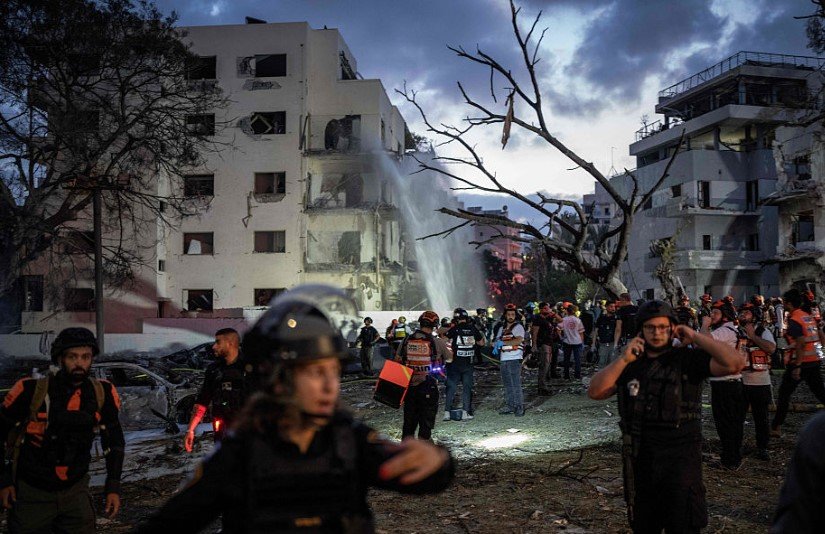As Israel-Iran hostilities deepen, New Delhi has launched urgent efforts to relocate Indian nationals from high-risk zones across Iran. Over 100 Indian students have already reached the Armenia border, while hundreds more are being moved to safer areas within the country.
Tehran to Qom: A Relocation Under Pressure
The skies over Tehran have grown hostile. Israeli strikes have made the Iranian capital a danger zone, forcing Indian officials to act swiftly. About 600 students were bused out of Tehran and shifted to Qom — a relatively calmer city, at least for now.
This move, though temporary, may have saved lives. The capital had become a potential military target. With missiles in the air and nerves stretched thin, students were caught in a blur of fear and confusion.
The Indian Embassy stepped up, coordinating directly with local institutions and the Ministry of External Affairs in New Delhi. Communication lines buzzed non-stop. They knew delays weren’t an option.

110 Students from Urmia Reach Armenian Border
While Tehran was under immediate threat, the situation in northwestern Iran was no better. Students in Urmia, a city close to the Turkish and Armenian borders, were told to pack their bags.
By Monday evening, around 110 of them had made it to the Armenian frontier. Most of these were university students, many of them from Kashmir and southern Indian states.
One student, speaking anonymously via WhatsApp, said: “We left everything behind. It wasn’t a choice. It was survival.”
The plan is to fly them out of Armenia by Tuesday, pending final clearances and airspace availability.
Coordinated Diplomacy and Real-Time Crisis Management
S. Jaishankar, India’s External Affairs Minister, has been personally involved in diplomatic outreach. On Sunday, he spoke with Ararat Mirzoyan, Armenia’s Foreign Minister, to ease the evacuation pathway through Armenian territory.
He also spoke with the UAE’s Sheikh Abdullah bin Zayed Al Nahyan, indicating the Indian government’s broader engagement across the West Asian region.
The MEA, in a late-night statement, confirmed:
-
The embassy in Tehran is monitoring the situation 24/7
-
Relocation efforts are underway for students in cities like Shiraz and Isfahan
-
Yazd has been identified as a temporary shelter zone
Students are being provided assistance with food, shelter, and internet connectivity so they can stay in touch with families back home.
Tensions Spark Fear Back Home, Especially in Kashmir
Back in Srinagar, the mood is grim. Hundreds of Kashmiri families have been glued to television sets, frantically checking their phones, desperate for updates on their children studying in Iran.
The number of Kashmiri students in Iran is substantial. Over the years, many have enrolled in medical and religious studies at universities in Qom, Mashhad, and Tehran.
Families have taken their fears public. Some have written to PM Modi directly. Others have turned to social media, pleading for safe returns.
The Numbers: How Many Indians Are In Iran?
India’s footprint in Iran is not insignificant. Here’s a quick snapshot:
| Category | Number |
|---|---|
| Total Indians | ~10,000 |
| Indian Students | ~6,000 |
| Students Relocated So Far | ~710 |
| Awaiting Evacuation | ~200+ |
Some of the students in Yazd and Qom are still unsure of what comes next. Will they stay there until things cool down? Or will there be a full airlift like the Ukraine crisis?
There are no clear answers yet.
What’s Next? Uncertainty Still Lingers
At the time of writing, the situation in Iran remains volatile. Israeli air strikes haven’t let up, and Iranian responses continue sporadically. The skies are tense, airspace is fragile, and flights in and out of the region are limited.
India is considering multiple evacuation channels:
-
Through Armenia, for those near Urmia
-
Possibly via Dubai or Muscat, depending on flight permissions
-
Internal relocation as a last resort if air routes close
The MEA has urged all Indian nationals in Iran to stay in close contact with the Embassy and avoid high-risk areas.
For now, there’s no mass evacuation plan — yet. The government appears to be prioritizing safety while avoiding panic. But that could change in a heartbeat if the conflict escalates.
One official said quietly, “We are watching every hour. If things spiral, we are ready to scale up fast.”
